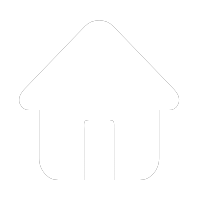Blog
The Mark T: Redefining Container Homes in Australia

Table of Contents
-
Introduction
-
Project Overview: What is The Mark T?
-
Key Design Highlights
-
Innovations in Comfort and Sustainability
-
Market Impact and Industry Trends
-
Why The Mark T Matters for Australia’s Housing Market
-
Challenges and Future Opportunities
-
Conclusion
-
FAQ
-
Marketing Highlights
1. Introduction
Australia’s housing landscape is undergoing a profound transformation. Amid rising property prices, shrinking land availability, and growing interest in sustainable architecture, container homes have emerged as a versatile, eco-conscious, and affordable solution.
The latest entry into this dynamic market is The Mark T, a stunning two-storey container home developed by Sonic Steel, a South Australian company known for its forward-thinking approach to prefab and modular living spaces.
Unlike early-generation container homes that prioritized cost and utility over comfort, The Mark T focuses on a premium living experience, integrating modern design, functional layouts, and environmental performance — a combination that positions it as a game changer in the modular housing industry.
2. Project Overview: What is The Mark T?
The Mark T is a two-storey modular home created from three high-grade shipping containers, assembled into a compact yet spacious layout that maximizes usability and aesthetic appeal.
According to the design brief shared by Sonic Steel, the project aims to meet the demands of modern Australians seeking:
-
Flexible residential options
-
Sustainable construction practices
-
High design standards at competitive prices
The unit is suitable for a variety of applications, from urban infill housing and holiday homes to rural retreats and accessory dwelling units (ADUs) in suburban backyards.
3. Key Design Highlights
The Mark T stands out with its minimalist elegance and smart space utilization.
Exterior Design
-
A bold all-black matte finish that exudes modern sophistication
-
Full-height glass panels and large sliding doors for abundant natural light
-
Compact footprint ideal for small plots, urban or rural
Interior Layout
-
Ground Floor:
-
Open-plan kitchen with premium finishes
-
Living and dining areas designed for comfort and efficiency
-
-
Upper Floor:
-
Private bedroom with access to a spacious balcony
-
Panoramic views for relaxation and leisure
-
Rooftop Terrace
-
A spiral staircase leads to a generous rooftop deck
-
Perfect for social gatherings, stargazing, or quiet retreats
4. Innovations in Comfort and Sustainability
Container homes often face criticism for issues such as poor insulation or limited airflow. The Mark T addresses these challenges head-on with advanced engineering and thoughtful design:
-
Enhanced Insulation: Thick, eco-friendly insulation materials regulate internal temperatures year-round.
-
Air-Tight Construction: Prevents heat loss while improving energy efficiency.
-
Cross Ventilation: Smart window placement enhances airflow, reducing the need for mechanical cooling.
-
Sustainable Materials: Reclaimed steel, low-VOC paints, and recycled fittings support a green construction ethos.
5. Market Impact and Industry Trends
The release of The Mark T underscores a broader shift in Australia’s modular housing industry:
From Functional to Aspirational
Early container homes were often seen as temporary or purely functional dwellings. Now, projects like The Mark T demonstrate that modular housing can deliver luxury aesthetics while retaining the benefits of affordability and flexibility.
Rising Demand for Tiny Houses
Australians are increasingly embracing smaller, smarter spaces. The Mark T fits perfectly within the tiny house movement, offering practicality without compromising comfort.
Sustainability as a Core Value
Environmental consciousness is no longer a niche priority but a mainstream expectation. The Mark T leverages eco-friendly practices, making it appealing to environmentally aware buyers.
6. Why The Mark T Matters for Australia’s Housing Market
-
Addressing Affordability:
With traditional housing costs surging, The Mark T provides an affordable alternative without sacrificing quality. -
Supporting Urban Density:
Its small footprint makes it ideal for urban infill projects and secondary dwellings, helping to maximize land use in high-demand areas. -
Promoting Design Innovation:
By merging industrial materials with high-end design, Sonic Steel sets a benchmark for other modular housing developers in Australia.
7. Challenges and Future Opportunities
Despite its strengths, The Mark T and similar modular housing projects face several challenges:
-
Regulatory Hurdles: Building codes and planning approvals vary significantly across states, sometimes delaying project implementation.
-
Financing Limitations: Banks and lenders are still cautious about funding modular or non-traditional builds.
-
Perception Gap: Some consumers still associate container homes with temporary or low-quality construction.
However, these challenges also present opportunities:
-
Streamlining approval processes
-
Educating the market on the durability and design potential of container builds
-
Leveraging government funding for innovative housing solutions
8. Conclusion
The Mark T is more than just a home; it’s a statement of what modern, sustainable living can look like in Australia. By blending cutting-edge design with affordability and ecological responsibility, Sonic Steel has created a product that resonates with a wide spectrum of homeowners, from young professionals to retirees seeking a simpler, greener lifestyle.
As demand for modular and prefab housing accelerates — driven by housing shortages, urban density challenges, and sustainability goals — The Mark T exemplifies how the industry can adapt, innovate, and thrive in a rapidly changing market.
9. FAQ
Q1: How much does The Mark T cost?
Pricing depends on customization and location, but estimates start at AUD 150,000.
Q2: Is The Mark T suitable for all climates in Australia?
Yes. Its insulation and ventilation systems are designed to handle both hot and cold conditions.
Q3: Can The Mark T be relocated?
Yes. Its modular design makes it relatively easy to move compared to traditional houses.
Q4: Does it meet Australian building standards?
Absolutely. The Mark T complies with National Construction Code (NCC) requirements.
Q5: Can it be customized?
Yes. Buyers can choose from various finishes, layouts, and additional features.

















